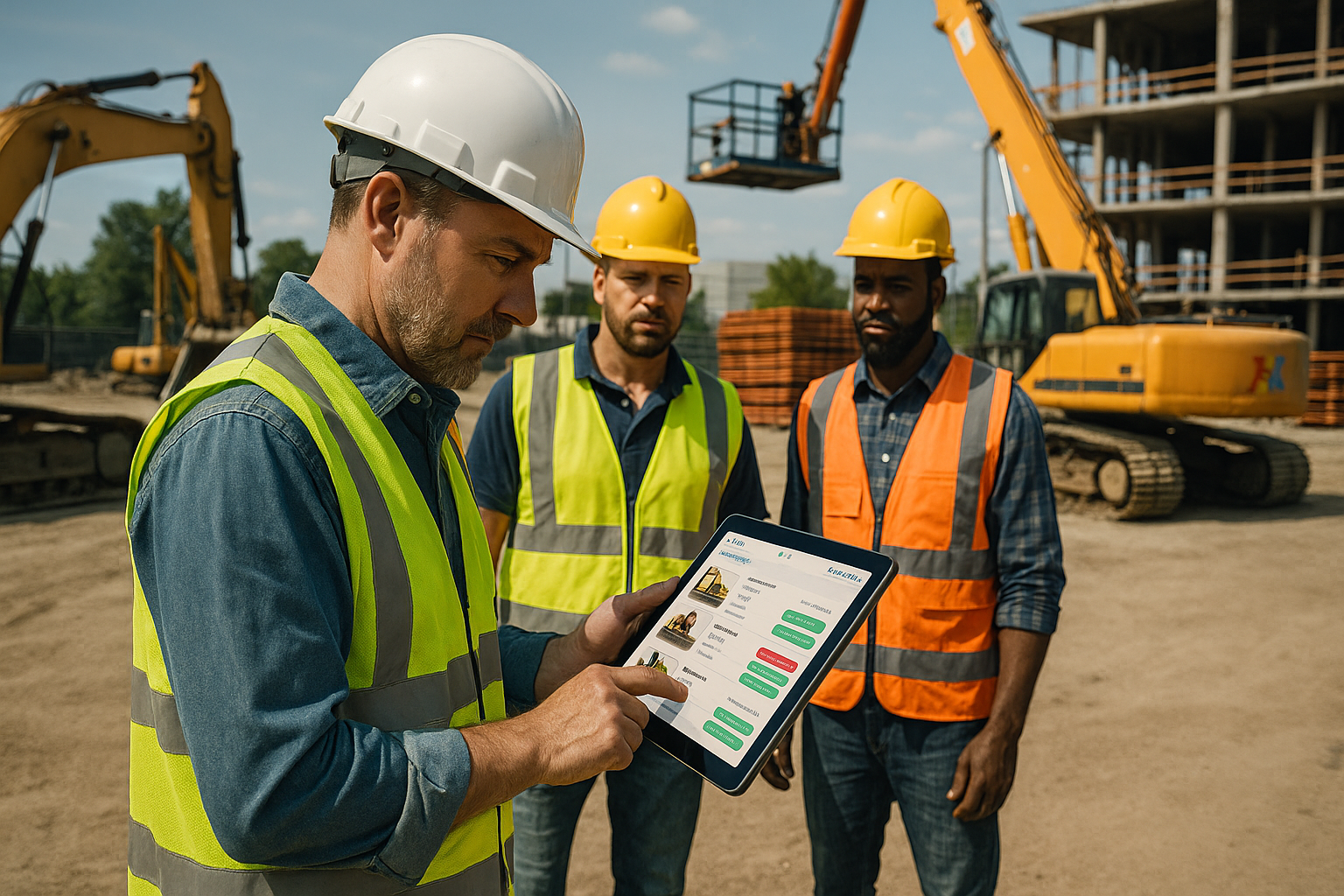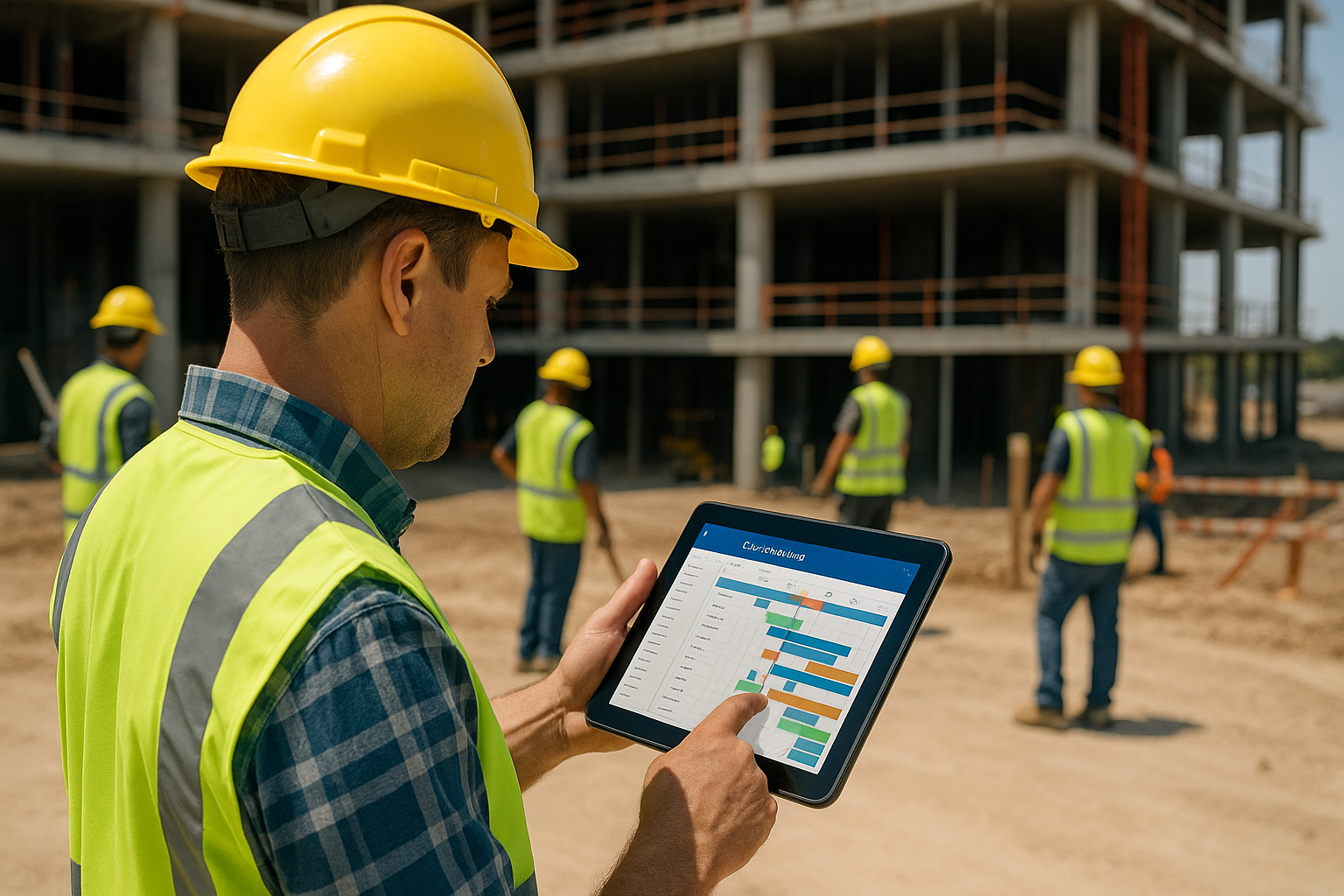The Internet of Things and The Construction Industry are NOT Mutually Exclusive!

You may be more familiar with the concept of IoT (Internet of Things) than you think!
After all, if you were to ask, “Alexa, what’s the temperature outside?” you’ll not only be given that information but just as likely to hear a forecast and general weather conditions in your area. IoT is everywhere and increasingly so in many of the devices we just naturally use very day – our phones, TV, electric toothbrush and tablets!
IoT is rapidly finding uses across multiple sectors, and while we might be most familiar with its usefulness in our own homes (smart TV’s, programmable thermostats and Alexa to name just a few), equally important, IoT has significant industrial and commercial applications as well.
In construction, IoT encompasses a wide range of applications that enable businesses to work smarter, safer, more autonomously and more efficiently. Such applications can be described using a framework of the “Five W’s.” (“who, what, where, when and why”).
In this blog, we’ll share a quick and easy guide to understanding why IoT and the construction industry are NOT mutually exclusive entities.
Simply put, the 5 “W” questions are those that need to be explored when determining how or if IoT will be introduced on the job site – planning and development, architectural drawings, construction stages, coordination of utility services and management of your human resources… to name just a few. In fact, indirectly, we’ve been addressing the use of IoT in construction since the beginning with our blogs that shared information on drones in construction, the use of AR and VR, “wearables,” and BIM. These are each excellent examples of IoT use in the construction industry.
OK… so back to our 5 W’s:
Who Should Be Using IoT?
- The proper use of technology and tech-enabled equipment drives higher levels of efficiency on projects. From project inception through to working with architectural and design firms, builders, tradespeople, utility companies and employees working ON the job site, IoT can play a vital role in the project’s success. Providing critical access and efficient sharing of information at every stage of a project’s development minimizes safety risks and lowers the potential of costly mistakes, creates the opportunity for more timely project completion and fosters cooperation across all trades.
The What and Why of IoT?
- BIM (Building Information Modelling) replaces the need for blueprints and the ongoing concerns around who has them, which version is the most recent, where they are they located on the job site… and more. Contractors, planners, on site staff – everyone has equal access to accurate and current information at the same time, irrespective of where they are. Moreover, 3D modelling capability allows users to “see” potential mistakes before they become disasters.
- Sensors that monitor, for example, heat / humidity, the curing rates of concrete, fuel use or even the placement of tags on equipment, all contribute to smart project planning. They help to improve security by preventing theft or downtime due to temporary loss through misplaced items. They also reduce downtime as a result of mistakes made while increasing efficient use of all resources (both human and mechanical) – enabling real time tracking of resource locations at any given time. Areas that will also benefit include maintenance (ensuring timely repairs and prevention of downtime) and employee safety. Job maps are able to identify danger zones on job sites, monitor, for example, air quality and identify safety issues or potential hazards before they become real life safety problems.
- Productivity is improved as IoT is able to optimize daily tasks such as scheduling, inspections and even onsite deliveries.
- Wearables are another important example of IoT that help ensure employee productivity (working smarter not harder) as well as safety. By monitoring important information like heart rate, proximity to danger, or air quality, the construction industry is helping to create a safer working environment. Employers who take steps such as providing heating or cooling reflective jackets to keep workers comfortable in any conditions, or who offer wearable sensors that are able to track worker fatigue, are demonstrating personal care and concern while reducing employee susceptibility to injury.
Where and When is IoT Applicable?
IoT can be introduced and have multiple applications that are crucial to every stage of the construction process from the design, to building stage, to the ongoing maintenance of a building upon its completion. In short, IoT facilitates both effective resource and asset management, helps to prevent workplace injury and death, reduces costs and the potential for expensive time delays.
IoT also enables the collection of real time data to create efficiencies on existing projects, and more strategically, to store that data for analysis to underscore opportunities to improve efficiencies on future projects. It has resulted in industry specific apps, many of which are compatible with the cell phones we all carry these days creating a seamless communications tool across all parties involved in the construction process. The ability to share important information with consistency, accuracy, and efficiency reduces downtime and lowers costs in what is fast becoming an increasingly more costly and competitive industry.
Now if only we could ask Alexa to pick up coffee and bring it to the job site!
*Brought to you by Plexxis Software: Offering software solutions for the construction industry that integrates cloud, mobile and on-premise software to improve and enhance team performance.




